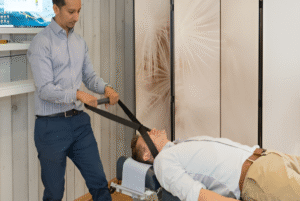Lymphatic Acne Treatment | Effective Methods for Clear Skin
Acne is a common skin condition that affects millions of people worldwide. While many forms of acne are well-known, lymphatic...

Acne is a common skin condition that affects millions of people worldwide. While many forms of acne are well-known, lymphatic acne is often overlooked. Lymphatic acne occurs due to congestion in the lymphatic system, leading to skin inflammation, clogged pores, and breakouts. Understanding lymphatic acne and adopting effective treatment strategies can help restore clear, healthy skin. In this article, we will explore what lymphatic acne is, its causes, symptoms, and the most effective treatments.
What is Lymphatic Acne?
The lymphatic system is an essential part of the body’s immune system. It helps remove toxins, waste, and excess fluids from tissues. When this system becomes congested or sluggish, the body struggles to eliminate toxins efficiently. This can manifest in the skin as lymphatic acne, characterized by swollen, red, and inflamed blemishes. Unlike typical acne, lymphatic acne often appears along the jawline, cheeks, and neck, which are areas closely connected to lymph nodes.
Lymphatic acne is more than just a cosmetic concern—it may indicate that your body’s detoxification system is under stress. Hence, addressing lymphatic congestion is crucial for both skin health and overall wellness.
Causes of Lymphatic Acne
Lymphatic acne can be triggered by several internal and external factors, including:
1. Poor Lymphatic Drainage
The lymphatic system relies on movement and circulation to function efficiently. Sedentary lifestyles, poor posture, and lack of exercise can lead to lymphatic stagnation, contributing to toxin buildup and acne formation.
2. Diet and Inflammation
A diet high in processed foods, sugar, and unhealthy fats can cause inflammation in the body. Inflammation affects the lymphatic system, reducing its ability to detoxify, which may trigger lymphatic acne.
3. Hormonal Imbalance
Hormones play a crucial role in acne development. Excess androgens can increase oil production, while hormonal fluctuations can impair lymphatic function, leading to breakouts.
4. Stress and Poor Sleep
Chronic stress and insufficient sleep can weaken the immune system, slowing lymphatic circulation and promoting skin issues, including lymphatic acne.
5. Toxins and Environmental Factors
Exposure to pollutants, chemicals, and toxins can overload the lymphatic system. When the body struggles to remove these toxins, acne and skin inflammation may occur.
Symptoms of Lymphatic Acne
Recognizing lymphatic acne is the first step toward effective treatment. Common symptoms include:
- Swollen, red, or inflamed pimples
- Breakouts concentrated around the jawline, cheeks, and neck
- Skin that feels heavy or congested
- Enlarged lymph nodes in the neck or under the jaw
- Slow healing of blemishes
- General fatigue or sluggishness due to lymphatic congestion
If you experience these symptoms, it may indicate that your lymphatic system needs support.
Effective Lymphatic Acne Treatments
Treating lymphatic acne requires a multi-faceted approach. While topical treatments can help, addressing the root cause—lymphatic congestion—is essential for long-term results.
1. Lymphatic Drainage Massage
Lymphatic drainage massage is a gentle technique designed to stimulate the lymphatic system and improve circulation. This massage helps the body remove toxins more efficiently, reducing inflammation and promoting clearer skin. Key benefits include:
- Reduction in swelling and puffiness
- Improved detoxification
- Faster healing of acne lesions
- Enhanced skin texture and radiance
Tip: Consult a certified lymphatic massage therapist to ensure proper technique and avoid aggravating your skin.
2. Skincare Routine for Lymphatic Acne
A consistent, gentle skincare routine can help manage lymphatic acne. Focus on products that reduce inflammation, unclog pores, and support lymphatic health:
- Cleanser: Use a mild, non-comedogenic cleanser to remove impurities without irritating the skin.
- Exfoliation: Gentle exfoliation 1-2 times per week helps remove dead skin cells that block pores. Avoid harsh scrubs that can aggravate inflammation.
- Topical Treatments: Ingredients like salicylic acid, tea tree oil, and niacinamide can help reduce breakouts and soothe inflamed skin.
- Moisturizer: Opt for lightweight, non-comedogenic moisturizers to maintain hydration without clogging pores.
- Sun Protection: Daily sunscreen prevents further skin irritation and protects against hyperpigmentation caused by acne.
3. Diet and Hydration
A balanced diet plays a significant role in lymphatic acne treatment. Focus on anti-inflammatory and nutrient-rich foods:
- Leafy greens: Spinach, kale, and arugula support detoxification.
- Fruits: Berries, citrus fruits, and papaya are rich in antioxidants.
- Healthy fats: Avocados, nuts, and olive oil help maintain skin health.
- Lean proteins: Fish, chicken, and legumes aid in tissue repair.
- Hydration: Drink at least 8–10 glasses of water daily to keep the lymphatic system functioning optimally.
Avoid processed foods, excess sugar, and fried foods, which can exacerbate inflammation and acne.
4. Exercise and Movement
Physical activity stimulates lymphatic circulation, helping the body remove toxins and reduce acne. Consider incorporating:
- Cardio exercises: Running, cycling, or brisk walking promotes overall circulation.
- Yoga: Certain yoga poses support lymphatic drainage, particularly in the neck, chest, and torso.
- Rebounding: Using a mini-trampoline can significantly enhance lymph flow and skin detoxification.
Consistency is key—regular movement ensures your lymphatic system functions efficiently.
5. Stress Management
Stress is a major contributor to lymphatic acne. When the body is stressed, lymphatic function slows, hormones fluctuate, and inflammation increases. Techniques to manage stress include:
- Meditation and deep breathing exercises
- Journaling or mindfulness practices
- Adequate sleep (7–9 hours per night)
- Limiting caffeine and alcohol intake
Managing stress not only improves skin health but also supports overall well-being.
6. Detoxification Support
Supporting the body’s natural detoxification processes can help reduce lymphatic acne. Consider:
- Herbal teas: Dandelion, ginger, and green tea can enhance lymphatic function.
- Dry brushing: Stimulates lymphatic flow and exfoliates the skin.
- Epsom salt baths: Promote relaxation and toxin removal through the skin.
- Supplements: Vitamins C, E, and zinc support skin healing and immune function.
Always consult a healthcare professional before starting new supplements or detox routines.
7. Professional Treatments
In some cases, professional treatments can accelerate results:
- Laser therapy: Reduces inflammation and acne scars.
- Chemical peels: Remove dead skin cells and unclog pores.
- Microneedling: Stimulates collagen production and skin healing.
- Dermatologist-prescribed medications: Topical retinoids or antibiotics may be necessary for severe lymphatic acne.
Professional guidance ensures safe and effective treatment tailored to your skin type.
Lifestyle Tips to Prevent Lymphatic Acne
Prevention is just as important as treatment. Here are lifestyle tips to keep lymphatic acne at bay:
- Maintain a regular skincare routine with gentle cleansing and hydration.
- Stay active and incorporate movement to stimulate lymph flow.
- Eat a balanced, anti-inflammatory diet.
- Manage stress through mindfulness, yoga, or hobbies.
- Avoid harsh chemicals, pollutants, and excessive sun exposure.
- Get adequate sleep to support immune and lymphatic system function.
By adopting these habits, you can reduce the likelihood of future breakouts and support healthy, glowing skin.
When to See a Doctor
While mild lymphatic acne can often be managed with home care, seek medical advice if:
- Acne is severe or painful
- Breakouts persist despite consistent care
- You notice unusual swelling or tenderness near lymph nodes
- You experience signs of systemic illness like fever or fatigue
A dermatologist can help determine the root cause and recommend appropriate treatments.
Conclusion
Lymphatic acne is more than just a skin issue—it reflects the health of your body’s lymphatic and detoxification systems. By addressing underlying causes, including lymphatic congestion, hormonal imbalances, and inflammation, you can achieve clearer, healthier skin. Effective treatments include lymphatic drainage massage, a tailored skincare routine, a nutritious diet, regular exercise, stress management, and professional therapies when necessary.
With consistent care and lifestyle adjustments, lymphatic acne can be effectively managed, helping you regain confidence and radiant skin. Remember, healthy skin starts from within—nourish your body, support your lymphatic system, and your skin will thank you.




